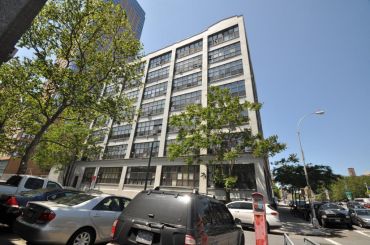 As we approach the end of 2009, I thought it would be worthwhile to take a look at some of the most pronounced trends that we are seeing in the New York City investment sales market. We will take a look at fundamentals, supply, demand and credit, and how they are affecting our marketplace.
As we approach the end of 2009, I thought it would be worthwhile to take a look at some of the most pronounced trends that we are seeing in the New York City investment sales market. We will take a look at fundamentals, supply, demand and credit, and how they are affecting our marketplace.
Fundamentals
It has been clear that our fundamentals, in terms of rental rates and occupancy levels, have degraded as the recession continues to chug along and, most importantly, unemployment continues to climb. Notwithstanding the positive jobs report on Friday, it is clear that unemployment is, and will remain, at elevated levels for the foreseeable future.
This is particularly true when you take into consideration those who have stopped looking for work and are no longer counted as unemployed and those who are underemployed, meaning they are working part time but would like to be working full time. With 11,000 net jobs lost in November, the only way the unemployment rate could have declined from 10.2 percent to 10.0 percent would be if significant numbers of people simply stopped looking for work.
These conditions have exerted significant downward pressure on rents across all sectors. Clearly, the reductions in rent levels vary market to market and building to building, but here is what we are seeing and hearing. In the multifamily housing market, we have seen residential rents for free-market apartments drop 20 to 25 percent if rent concessions and promotions are taken into consideration (rent-regulated rents continued to rise, helping the performance of this sector). In the retail sector, we have seen reports showing retail rent declines from as low as 25 percent to as much as 35 percent. In the office sector, reports show declines in rent of 33 to 40 percent, again including concessions that are at present extensive. The negative impact on building revenue has resulted in lower net operating incomes and lower values.
In addition to net-income declines, we have seen cap-rate expansion across all property segments. This cap-rate expansion has affected multifamily properties the least, with increases of 123 basis points for walk-up buildings and 145 basis points for elevator properties. Mixed-use and retail properties have seen expansions of 189 and 205 basis points, respectively. Cap-rate expansion in the office building sector has been 189 basis points from the low point. The combination of reduced revenues and cap-rate expansion has lowered values by 34 percent through the first week in November of 2009 from their peak.
Real estate taxes are something we are watching very closely. The new tax rates for 2009 and 2010 have been announced recently, indicating increases of 9.1 percent for multifamily properties and 0.6 percent for commercial properties. These increases do not seem overly onerous given the fiscal position of the city. We must, however, keep in mind that due to the way they are calculated, tax assessments are continuing to rise even with the reductions in value that we have seen. We believe that an even greater increase in real estate taxes will be unavoidable moving forward.
Supply
The volume of sales has been extraordinarily low, with volume, on an aggregate sales price basis, down 92 percent from the peak, and the number of buildings sold down 74 percent (the differential clearly shows a bias towards small transactions, which are much easier to finance). It is widely thought that the low volume of sales is based upon a lack of buyer demand or a significant gap in what is referred to as the bid-ask spread.
We believe that these miniscule volumes have been created by supply constraint much more so than by a lack of demand. Discretionary sellers have been reluctant to put properties on the market, and those that are selling today have some compelling reason to do so.
We have also seen very few distressed assets coming to market, as everything that has happened legislatively is allowing lenders to keep bad loans on their balance sheets without bringing them to market. This dynamic has started to shift, as we have seen an increasing interest on behalf of lenders to sell REO properties (which they are just beginning to do, as the foreclosure process is longer today than it has ever been) and to sell notes based upon a desire to monetize the asset without going through a prolonged foreclosure process. As this trend continues, we expect to see gradual increases in supply.
As the Bush tax reductions expire at the end of 2010, and capital-gains taxes are constantly targeted as a source of more revenue for government initiatives like health care, the potential increases in capital-gains taxes could create added supply in 2010 as sellers try to sneak in under the wire.


